Abstract
This paper describes our software for rapid construction of multimedia computer interviews. The program, which we call IMPACT, was designed to measure preferences for health outcomes using the standard gamble and other decision analytic techniques. IMPACT is also a multimedia shell program that allows researchers to interactively construct patient interviewing instruments without programming or scripting. It supports the integration of text, graphics, synthesized speech, digital sound and QuickTime movies into interviewing instruments through a point-and-click interface. IMPACT also supports branching logic and randomizing the presentation order of materials within an instrument. This allows customization of the presentation based on patient responses and facilitates experimental designs. Validation studies show that preference assessments performed using IMPACT have high test-retest reliability (r = 0.83, n = 96). Post-test surveys (n = 52) show that most subjects understand valuation methods (86%) and believe that the explanations provided were clear (96%) and that methods were reasonable (80%). The majority of subjects thought the preference assessment methods were not difficult to use (53%) and would have been comfortable using such methods for medical decisions (53%).
Full text
PDF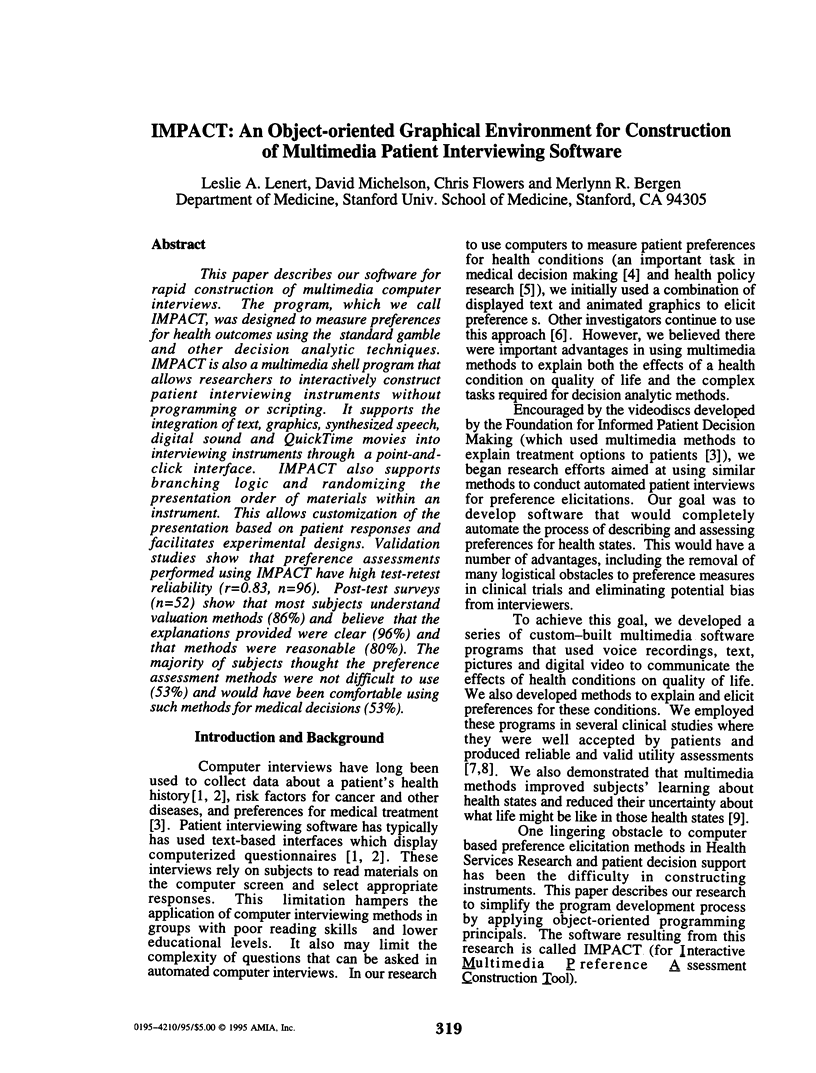
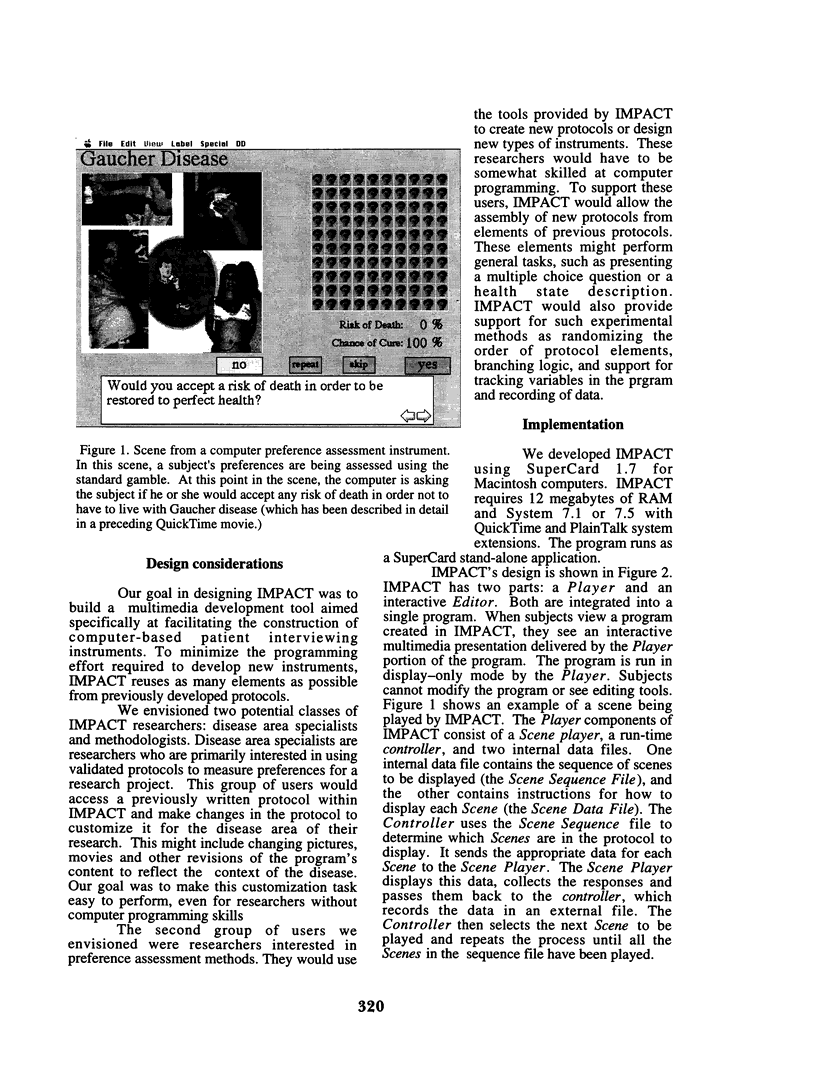
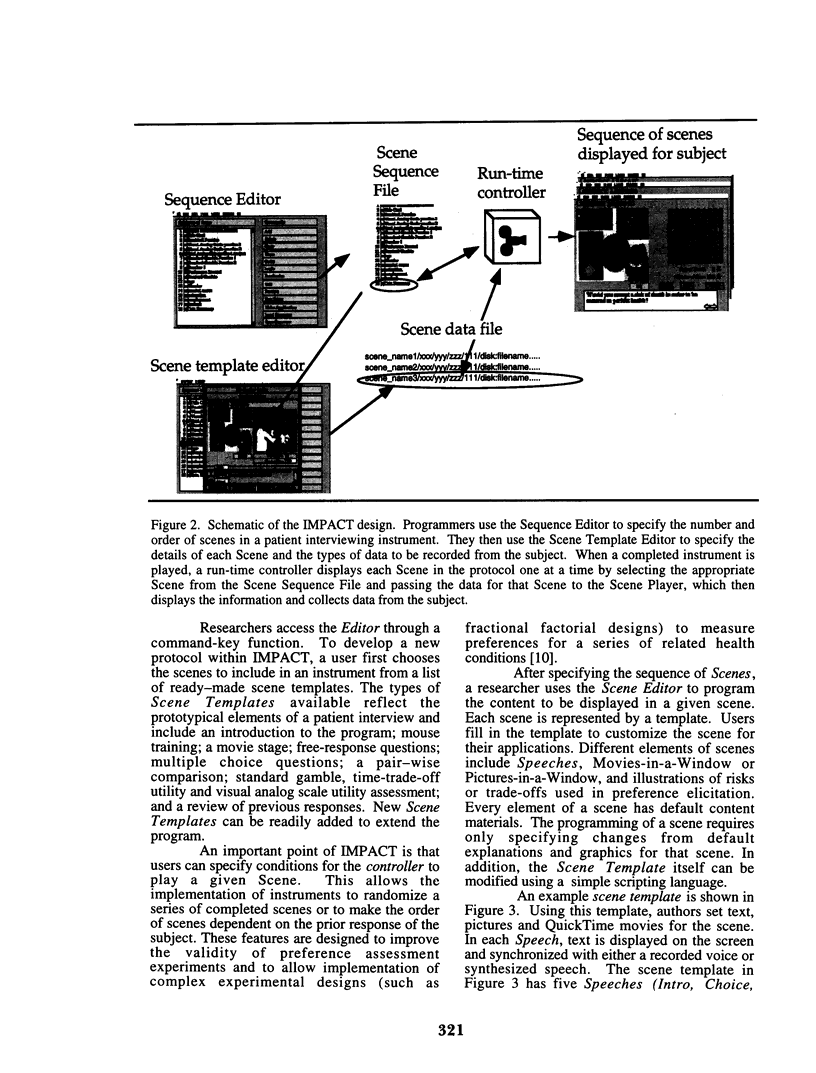
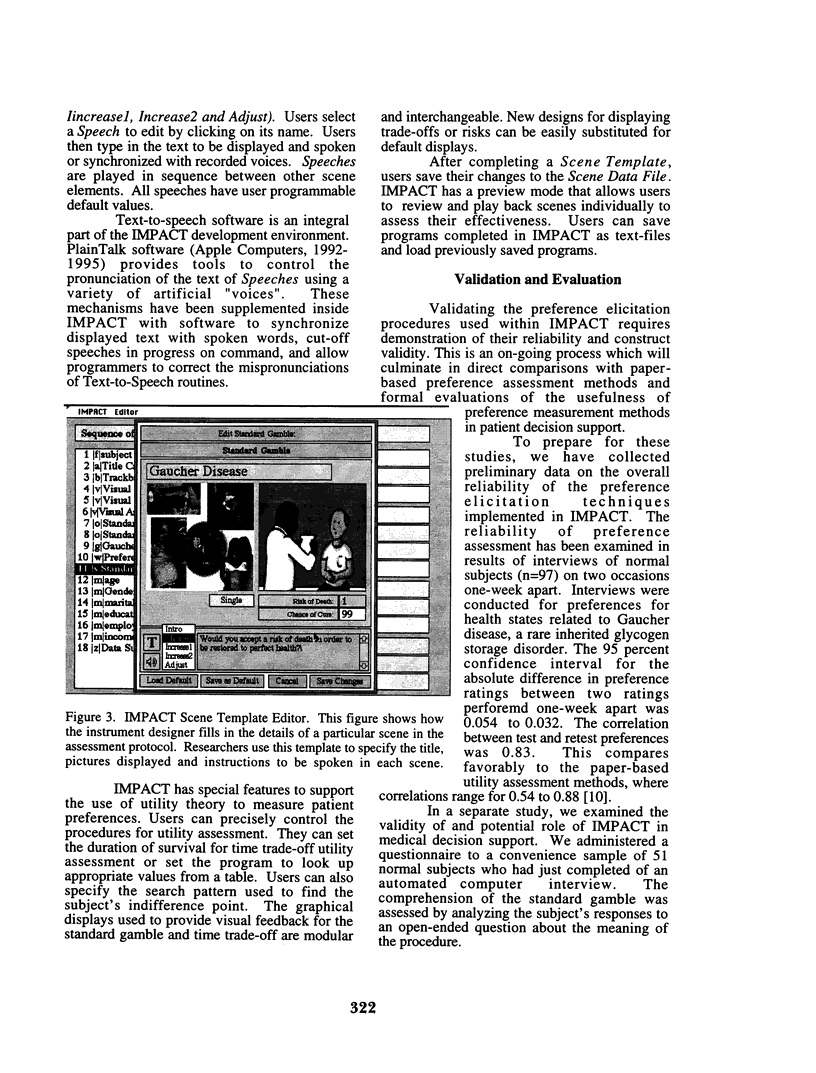
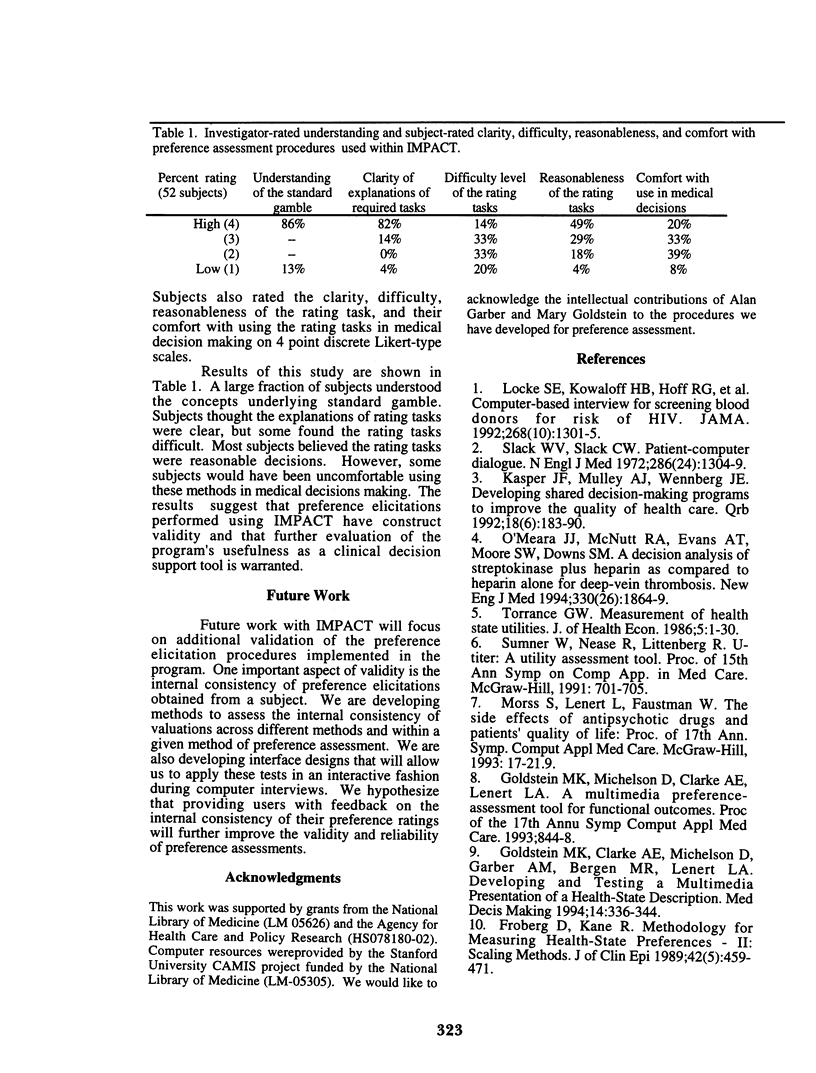
Images in this article
Selected References
These references are in PubMed. This may not be the complete list of references from this article.
- Froberg D. G., Kane R. L. Methodology for measuring health-state preferences--II: Scaling methods. J Clin Epidemiol. 1989;42(5):459–471. doi: 10.1016/0895-4356(89)90136-4. [DOI] [PubMed] [Google Scholar]
- Goldstein M. K., Clarke A. E., Michelson D., Garber A. M., Bergen M. R., Lenert L. A. Developing and testing a multimedia presentation of a health-state description. Med Decis Making. 1994 Oct-Dec;14(4):336–344. doi: 10.1177/0272989X9401400404. [DOI] [PubMed] [Google Scholar]
- Goldstein M. K., Michelson D., Clarke A. E., Lenert L. A. A multimedia preference-assessment tool for functional outcomes. Proc Annu Symp Comput Appl Med Care. 1993:844–848. [PMC free article] [PubMed] [Google Scholar]
- Kasper J. F., Mulley A. G., Jr, Wennberg J. E. Developing shared decision-making programs to improve the quality of health care. QRB Qual Rev Bull. 1992 Jun;18(6):183–190. doi: 10.1016/s0097-5990(16)30531-0. [DOI] [PubMed] [Google Scholar]
- Locke S. E., Kowaloff H. B., Hoff R. G., Safran C., Popovsky M. A., Cotton D. J., Finkelstein D. M., Page P. L., Slack W. V. Computer-based interview for screening blood donors for risk of HIV transmission. JAMA. 1992 Sep 9;268(10):1301–1305. [PubMed] [Google Scholar]
- Morss S. E., Lenert L. A., Faustman W. O. The side effects of antipsychotic drugs and patients' quality of life: patient education and preference assessment with computers and multimedia. Proc Annu Symp Comput Appl Med Care. 1993:17–21. [PMC free article] [PubMed] [Google Scholar]
- O'Meara J. J., 3rd, McNutt R. A., Evans A. T., Moore S. W., Downs S. M. A decision analysis of streptokinase plus heparin as compared with heparin alone for deep-vein thrombosis. N Engl J Med. 1994 Jun 30;330(26):1864–1869. doi: 10.1056/NEJM199406303302605. [DOI] [PubMed] [Google Scholar]
- Slack W. V., Slack C. W. Patient-computer dialogue. N Engl J Med. 1972 Jun 15;286(24):1304–1309. doi: 10.1056/NEJM197206152862408. [DOI] [PubMed] [Google Scholar]
- Sumner W., Nease R., Littenberg B. U-titer: a utility assessment tool. Proc Annu Symp Comput Appl Med Care. 1991:701–705. [PMC free article] [PubMed] [Google Scholar]
- Torrance G. W. Measurement of health state utilities for economic appraisal. J Health Econ. 1986 Mar;5(1):1–30. doi: 10.1016/0167-6296(86)90020-2. [DOI] [PubMed] [Google Scholar]





